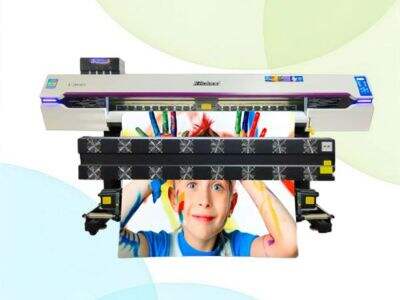If you ever wondered how film thickness can influence the quality of a DTF print, here is some info you are looking for. The Thickness of Film and DTF Print Resolution DTF film thickness is one of the key parts of knowing how well your prints are going to turn out on DTF printing, which is a popular method for getting bright and accurate prints on any surface.
Relationship between film thickness and DTF print quality
Film thickness pertains to the thickness of the film involved in DTF printing. A thicker film is necessary to properly transfer ink onto the final surface and will affect the quality of the print. A film too thin will not hold ink in the right amount and you may get faded or blotchy prints. So, if the film is too thick then it may not stick properly to the surface and this will result in smudged or unclear prints.
Effects of Film Thickness in DTF Print Resolution
ResolutionIn the DTF print, the resolution of an image is one of the parts that in charge detailed and sharpness as it visible to our eyes: This can directly influence the resolution of a DTF print by changing the way in which the ink will be deposited on the surface due to film thickness. In general, fatter foil cannot properly adapt to the surface and production of blurred edges or non sharpened details. In contrast, the thinner films allow for a cleaner ink transfer with less dot gain resulting in brighter and more vinyl printer images.
The Simplicity of Direct-to-FilmHow Film Thickness Affects The Clarity and Detail in your DTF Prints
The quality and accuracy of a DTF print, it is depends on the thickness of the film applied to coat the media. Thicker films can act as a barrier between the ink and the surface, causing an effect on detail of clarity in print. Thin films created better adhesion as they allowed the ink to more closely contact surface which in turn produced sharper lines and clearer details. With the correct film thickness, you will tune mini thermal printer more precise and details.
Controlled Film Thickness To Optimize DTF Print Resolution
For high quality DTF prints, you need to control the resolution by adjusting the film thickness. Through trial and error with film thickness, you can dial it in to get the balance of clearness and detail we are looking for on a print. Adjusting the film thickness of this roller varies significantly depending on what kind of surface you are printing on and what kind of ink is being printed. By doing slight changes you can get precise print resolution and create beautiful DTF prints.
Why you need the right film thickness to get the best DTF result
In summary, DTF printing is conditioned by the caliper of the film that will be used. Understanding the DTF Print Resolution and Film Thickness Relationship you can achieve print quality with more detail defined in prints you will need to experiment with a variety of film thicknesses and make fine-tuning alterations to do so, but once you have completed the task, your DTF prints should be some of the best on the market and simply exquisite in their brilliance and detail. We at Jihui Electronic will help you in producing the best results for your wall printer projects. Select the perfect film thickness for your prints and get affordable assistance to make your squeegees with our product.
Table of Contents
- Relationship between film thickness and DTF print quality
- Effects of Film Thickness in DTF Print Resolution
- The Simplicity of Direct-to-FilmHow Film Thickness Affects The Clarity and Detail in your DTF Prints
- Controlled Film Thickness To Optimize DTF Print Resolution
- Why you need the right film thickness to get the best DTF result



